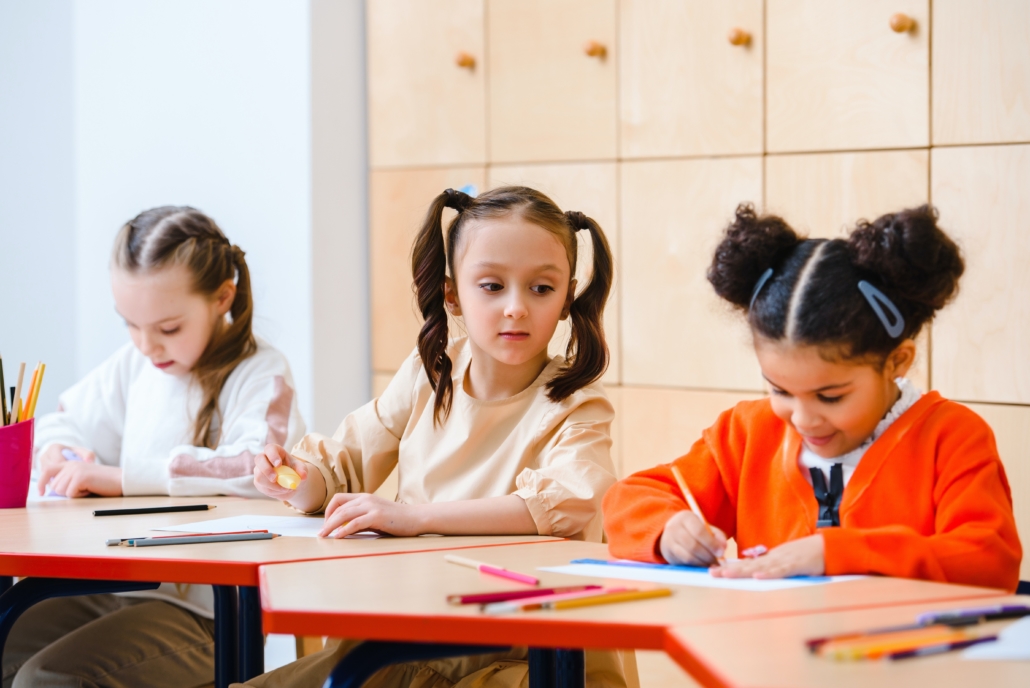

- Call 908 543 4390
- Email
- Dr.Joni Redlich PT,DPT



The Summer Is A Magical Time For Childhood.
It allows an increased opportunity for outdoor play, creativity, exploration of new environments, unstructured social interactions with peers, and travel to new places via day trips or family vacations.
Whether your child spends more time outdoors with neighborhood friends, experiences nature at camp, ventures to the park with the family, goes on rides at amusement parks or carnivals, plays in the sand at the beach, goes tubing or boating, bikes around the block, splashes in the sprinklers or a pool, creates with chalk masterpieces on the driveway, or camps in the woods; your child is in a sensory wonderland.
All these experiences provide your child with significant opportunities for movement and diverse sensory experiences that are so important to help develop their sensory integration systems and gross motor skills and promote self- regulation.
No Wonder it is a challenge to transition from this sensory and movement rich environment back to the classroom where our children are expected to sit still and focus on their academic curriculum.
That’s why we have compiled this Back to School Movement List. These items may help if your child has an especially challenging time with this transition by incorporating both movement and sensory activities into the school environment in a classroom friendly way. These movement and sensory outlets promote a calm demeanor and an enhanced ability to focus and concentrate so that our kiddos are ready to learn about our crazy, cool world.
If your kid is: always wiggling, shifting, rocking in, or getting out of their chair or sitting with slouched posture.
How it helps: Improves posture, promotes active sitting, activates the core for improved postural stability, and provides proprioception and body awareness.,
If your kid is: often tapping their feet on the floor, pushing the top of their feet into the ground or the legs of the desk, wrapping their feet behind the legs of their chair, wiggling in their chair, getting out of their chair, distracted, anxious, or sitting with slouched posture.
How it helps: Provides proprioception and body awareness, lower limb movement, deep pressure and joint compression with rebound of the band, resistance for hard work which can be grounding for your child.
If your kid is: always chewing on their pencils, biting their nails, gnawing on their shirt/clothes, anxious, distracted, clenching their jaw, or grinding their teeth.
How it helps: deep pressure input, movement and heavy work of the jaw, activation of muscles in jaw and neck which promotes improved postural stability, proprioception and body awareness,
If your kid is: often tapping their feet on the floor, pushing the top of their feet into the ground or the legs of the desk, wrapping their feet behind their chair legs, wiggling in their chair, getting out of their chair, distracted, anxious, or sitting with slouched posture.
How it helps: Provides proprioception and body awareness, lower limb movement, resistance for hard work, deep pressure input, and exploration of texture with the choice of the smooth or bumpy surface.
If your kid is: often fidgeting in their chair, playing with their hair, distracted, anxious, getting out of their chair, talking excessively in class, clenching their hands, picking at their skin, or tapping their fingers or pencils on the desk.
How it helps: Provides proprioception and body awareness, movement, resistance, exploration of texture, an outlet for restlessness, and activation of hand, arm, and shoulder muscles.
This is not an exhaustive list and there is no such thing as one size fits all. Consider the strengths, sensory preferences, and movement needs of your child. If you need help navigating what your child’s needs are, try booking an occupational therapy consultation near you. The summer is not over yet, so keep basking in the sensory and movement wonderland.
We all learn about our 5 senses as children: smell, touch, see, hear and taste. Our sensory systems are so important to how we experience each day. We smell the delicious food that is cooking, hear the sizzle from the pan and can’t wait to get a taste. Our sensory systems also underlie our attention, focus and motor control. An important sense that may not be part of our daily consciousness, but is integral to our ability to move, play and learn, is our sense of balance.
Read more
